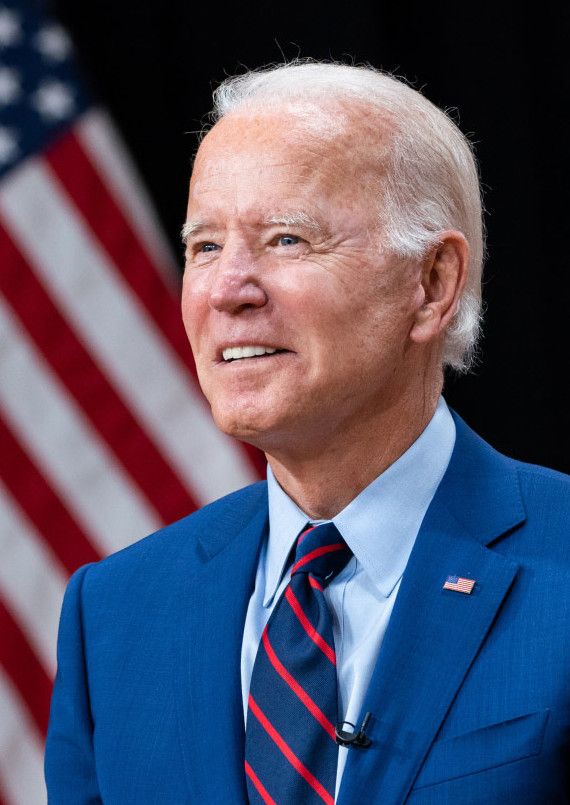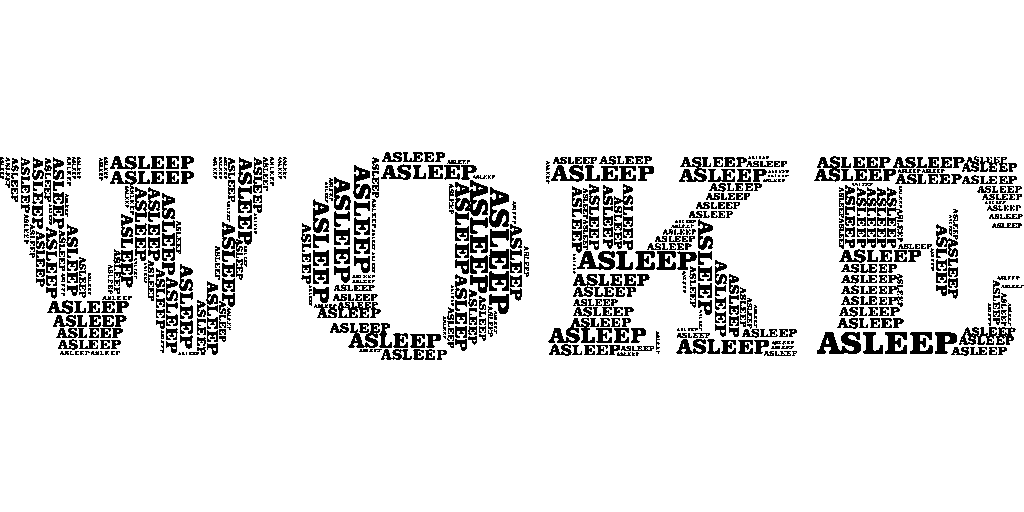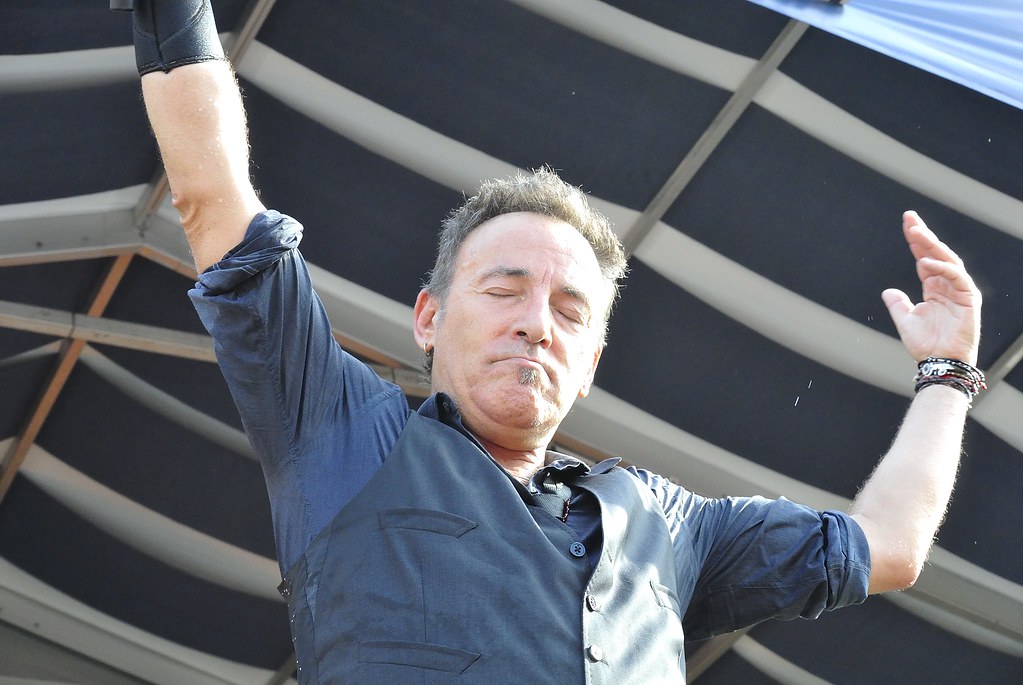
Bruce Springsteen, affectionately known as “The Boss,” has carved an indelible legacy in the annals of American music, transitioning from a Jersey Shore club musician to a global icon whose work resonates with themes of working-class struggles, redemption, and the enduring American spirit. His career, spanning over five decades, is marked by a relentless pursuit of authentic storytelling, combined with a dynamic live presence that has captivated millions worldwide. From his humble beginnings, through periods of critical struggle and monumental success, Springsteen’s journey offers a rich tapestry of musical evolution and cultural impact.
This article embarks on an in-depth exploration of Bruce Springsteen’s remarkable career, examining the key milestones, pivotal albums, and defining moments that shaped his artistic trajectory and cemented his status as one of rock and roll’s most profound and influential figures. We will meticulously trace his path, utilizing direct insights from biographical accounts and critical observations, to provide a factual and objective overview of his multifaceted contributions to music and society. Our focus will be on the chronological development of his artistry, highlighting the significant turns and achievements that underscore his lasting appeal.
As we delve into the various phases of his professional life, we aim to present a comprehensive narrative that reflects the depth and breadth of his musical output and public persona. This journey through Springsteen’s career will illuminate not only the artistic choices that defined his sound but also the cultural conversations his music has ignited, demonstrating how his work consistently engaged with and reflected the socio-political landscape of his time.

1. **1964–1972: Early Career and Formative Influences**Bruce Springsteen’s musical odyssey formally began in 1964, a year after he witnessed the transformative televised appearances of The Beatles on The Ed Sullivan Show. This seminal experience spurred him to purchase his first guitar for $18.95 at the Western Auto appliance store. Inspired by the British Invasion, he quickly began performing for audiences with his first band, the Rogues, playing at local venues such as the Elks Lodge in Freehold. His mother’s financial support, taking out a loan to buy him a $60 Kent guitar in 1965, was an act he would later commemorate in his song “The Wish,” underscoring the foundational role of family in his early endeavors.
The mid-1960s saw Springsteen further immerse himself in the local music scene. He connected with Tex and Marion Vinyard, who were instrumental in sponsoring young bands in his hometown. With their encouragement, Springsteen became the lead guitarist and a lead singer for the Castiles, a band that recorded two original songs at a public recording studio in Brick Township. The Castiles performed at diverse venues, including the iconic Cafe Wha? in Greenwich Village, providing Springsteen with early exposure to varied audiences and the bustling New York music landscape. Marion Vinyard, a keen observer, expressed her belief in the young Springsteen’s promise to achieve widespread success.
Towards the late 1960s, Springsteen explored different musical configurations, briefly performing in a power trio named Earth. This group played in various clubs across New Jersey and even secured a significant show at the Hotel Diplomat in New York City, indicating a gradual expansion of his performance reach. The period from 1969 through early 1971 saw him fronting the band Child, which soon evolved into Steel Mill. This iteration included future E Street Band members Danny Federici and Vini Lopez, alongside Vinnie Roslin, and later Steven Van Zandt and Robbin Thompson, marking the nascent stages of his enduring musical partnerships.
Steel Mill performed extensively across the Jersey Shore and ventured beyond New Jersey to cities like Richmond, Virginia, Nashville, Tennessee, and California, cultivating a dedicated cult following. Music critic Philip Elwood, reviewing Steel Mill’s show at The Matrix in January 1970, famously declared he had “never been so overwhelmed by a totally unknown talent,” hailing Steel Mill as “the first big thing that’s happened to Asbury Park since the good ship Morro Castle burned to the waterline of that Jersey beach in ’34.” Elwood lauded the band’s “cohesive musicality” and recognized Springsteen as “a most impressive composer,” providing early critical validation for his burgeoning talent.
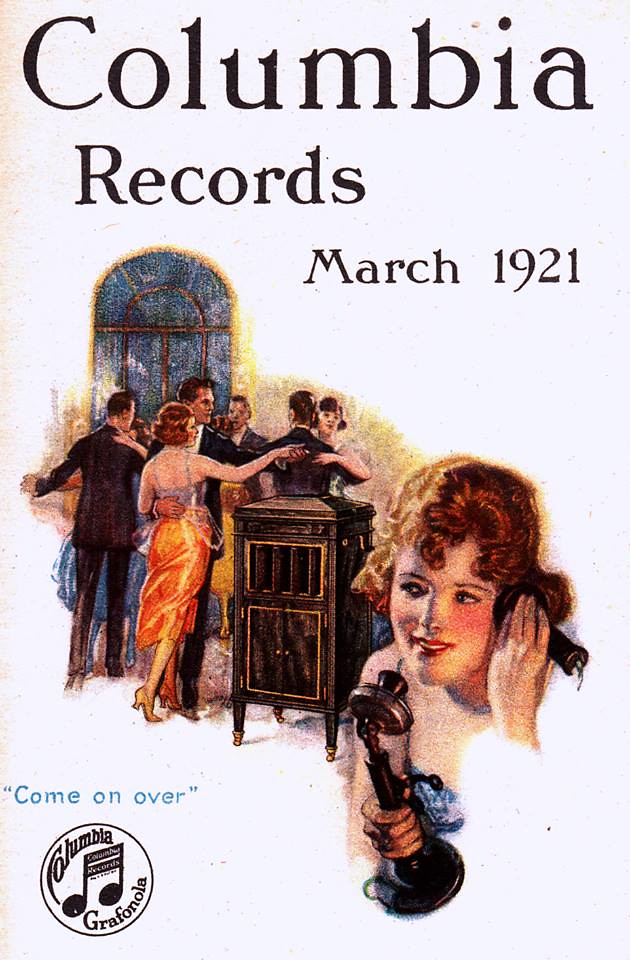
2. **1972–1974: Initial Struggles and Columbia Records Signing**As Springsteen endeavored to forge a distinctive musical and lyrical identity, he continued to perform with several bands, including Dr. Zoom & the Sonic Boom from early-to-mid-1971, the Sundance Blues Band in mid-1971, and the Bruce Springsteen Band from mid-1971 to mid-1972. It was during this period that his exceptional songwriting prowess began to draw significant attention. His future record label would later describe his ability as containing “more words in some individual songs than other artists had in whole albums,” highlighting his unique lyrical density.
These developing skills brought him to the notice of influential figures in the music industry, including managers Mike Appel and Jim Cretecos. They, in turn, introduced him to John Hammond, a legendary talent scout at Columbia Records, renowned for signing Bob Dylan a decade earlier. This connection proved pivotal, leading to Springsteen’s audition for Hammond in May 1972. The audition was successful, and Springsteen was subsequently signed to Columbia Records, a monumental step in his career.
In October 1972, Springsteen assembled a new band for the recording of his debut album, *Greetings from Asbury Park, N.J.* This ensemble would eventually become known as the E Street Band, though the name itself wasn’t formally adopted until September 1974. During this era, Springsteen also acquired his enduring nickname, “the Boss.” The moniker originated from his practical role of collecting the band’s nightly earnings and distributing them among his bandmates. It also reportedly stemmed from games of Monopoly that Springsteen played with other Jersey Shore musicians, adding a layer of local lore to his public identity.
*Greetings from Asbury Park, N.J.* was released in January 1973 and immediately garnered critical favor. Critics, noting Springsteen’s poetic lyricism, folk-rock roots evident in tracks like “Blinded by the Light” and “For You,” and his association with Hammond and Columbia, frequently drew comparisons to Bob Dylan. Peter Knobler, editor of *Crawdaddy* magazine, an early champion of Springsteen, wrote in a March 1973 profile: “He sings with a freshness and urgency I haven’t heard since I was rocked by ‘Like a Rolling Stone’.” *Crawdaddy*’s consistent support included three profiles by Knobler in 1973, 1975, and 1978, and a private performance by Springsteen and the E Street Band at the magazine’s 10th Anniversary Party in New York City in June 1976.
Springsteen’s second album, *The Wild, the Innocent & the E Street Shuffle*, followed eleven months later in November 1973. Like its predecessor, this album was met with critical acclaim but experienced limited commercial success. The songs on this record showcased a grander form and scope, with the E Street Band contributing a less folksy, more rhythm and blues-infused sound. Lyrically, the album romanticized teenage street life, producing fan favorites such as “4th of July, Asbury Park (Sandy)” and “Incident on 57th Street.” The track “Rosalita (Come Out Tonight)” cemented its place as one of Springsteen’s most beloved concert numbers, having been played live 809 times as of June 2020, standing as the ninth-most performed song in his concert catalog.
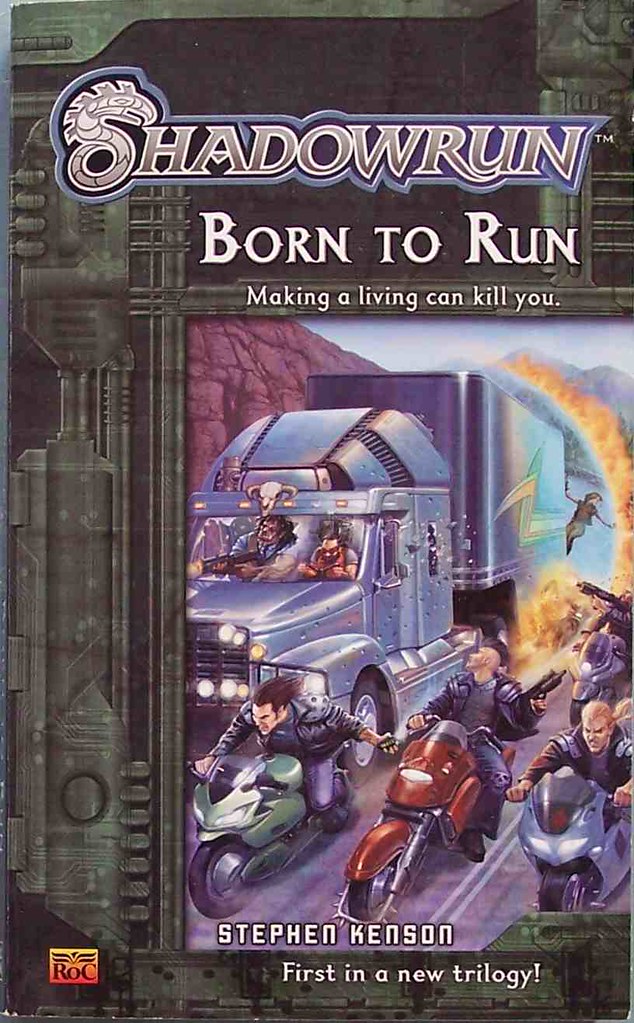
3. **1975–1983: Born to Run and Breakthrough Success**The year 1974 proved to be a pivotal moment for Bruce Springsteen. Following a compelling performance at the Harvard Square Theater, music critic Jon Landau famously declared, “I saw rock and roll future, and its name is Bruce Springsteen.” This statement captured the burgeoning recognition of Springsteen’s immense potential. Landau, who had met Springsteen in Boston a month prior, quickly developed a close friendship with the artist and later became a co-producer for his next album, *Born to Run*, starting in February 1975. This partnership marked a significant turn in Springsteen’s professional life.
*Born to Run* was conceived as Springsteen’s last-ditch effort for a commercially viable record. The recording process was arduous and extended, with Springsteen becoming deeply immersed in striving for a “Wall of Sound” production quality. This pursuit led to significant frustration and anger throughout the sessions, as he struggled to articulate the “sounds in [his] head” to his collaborators. The album took over 14 months to record, with a remarkable six months dedicated solely to the title track. During this intensive period, E Street Band members David Sancious and Ernest Carter departed, replaced by Roy Bittan on piano and Max Weinberg on drums, cementing key figures in the band’s enduring lineup.
The album’s creation was further complicated by the presence of two producers with opposing artistic visions. A notable anecdote from the sessions involved Steven Van Zandt, who, when Springsteen and Bittan struggled to write horn parts for “Tenth Avenue Freeze-Out,” spontaneously conceived them in the studio on the spot. Van Zandt subsequently joined the E Street Band, solidifying a long-standing collaboration. Mixing for *Born to Run* concluded on July 20, 1975, just ahead of a planned concert tour, highlighting the immense pressure and tight deadlines the band faced.
Springsteen’s meticulousness extended even to the mastering of the album. While the band was on tour, he rejected multiple mixes, famously throwing the initial acetate into a hotel swimming pool in his fury. He even contemplated scrapping the entire project and re-recording it live, a drastic move only averted by Landau’s intervention. It wasn’t until August that he finally approved the final mix, underscoring the high stakes and artistic perfectionism that defined the album’s completion.
Released in August 1975, *Born to Run* lived up to its promise, becoming a breakthrough album that catapulted Springsteen to worldwide fame. It peaked at No. 3 on the Billboard Top LPs & Tape chart and ultimately achieved seven-times platinum status in the U.S. The singles “Born to Run” and “Tenth Avenue Freeze-Out” reached No. 23 and 83 on the Billboard Hot 100, respectively. Author Louis Masur posited that the album’s success resonated with the fears of growing old held by a generation of late teenagers, connecting with a profound demographic sentiment.
In October 1975, Springsteen made history by appearing on the covers of both *Newsweek* and *Time* in the same week, an unprecedented feat for an artist. This sudden surge in media attention, however, triggered a backlash, with critics questioning whether Springsteen was a genuine talent or merely a product of record company promotion. Springsteen himself was reportedly hurt by the negative attention and disliked his newfound visibility, even tearing down promotional posters in the lobby of the Hammersmith Odeon during the E Street Band’s first concerts outside North America in London.
A protracted legal battle with his manager, Mike Appel, kept Springsteen out of the studio for nearly a year following *Born to Run*’s success. Despite this impediment, he kept the E Street Band together through extensive touring across the U.S. and continued to write new material, demonstrating his unwavering commitment to his craft and his band. A settlement with Appel in May 1977 cleared the way for Springsteen to return to the studio.
This led to nine months of intensive recording sessions with the E Street Band, culminating in the release of *Darkness on the Edge of Town*. This album marked a departure from the “Wall of Sound” production of *Born to Run*, opting for a rawer, hard rock sound. Lyrically, *Darkness* focused on the struggles of “ill-fortuned people who fight back against overwhelming odds,” reflecting a more grounded and socially conscious perspective.
Released in June 1978, *Darkness on the Edge of Town* sold fewer copies than its predecessor but maintained a strong presence on the Billboard chart for 167 weeks, selling three million copies in the U.S. Its singles—”Prove It All Night,” “Badlands,” and “The Promised Land”—performed modestly. The accompanying Darkness Tour was Springsteen’s largest to date, featuring shows that often extended beyond three hours, solidifying Springsteen and the E Street Band’s reputation as “one of the most exciting live acts in rock ‘n’ roll,” according to *Ultimate Classic Rock* staff.
By the late 1970s, Springsteen had also established himself as a sought-after songwriter for other artists. Manfred Mann’s Earth Band achieved a U.S. No. 1 pop hit with a heavily rearranged version of *Greetings*’ “Blinded by the Light” in early 1977. Patti Smith reached No. 13 with her version of Springsteen’s unreleased “Because the Night,” featuring her revised lyrics, in 1978. The Pointer Sisters found success with Springsteen’s then-unreleased “Fire,” hitting No. 2 in 1979. Between 1976 and 1978, Springsteen contributed four compositions to Southside Johnny and the Asbury Jukes, including “The Fever” and “Hearts of Stone,” and collaborated on four more with Steven Van Zandt, who produced their first three albums.
In September 1979, Springsteen and the E Street Band participated in the Musicians United for Safe Energy (No Nukes) anti-nuclear power collective, performing two nights at Madison Square Garden. They played an abbreviated set and premiered two songs from his upcoming album. The subsequent *No Nukes* live album and the following summer’s documentary film provided the first official recordings and footage of Springsteen’s celebrated live act, marking his initial foray into political involvement.
The recording sessions for Springsteen’s fifth album, *The River*, extended over 18 months. This 20-track double album was an ambitious endeavor to capture the raw energy and live feel of the E Street Band on stage. It featured a diverse mix of upbeat “party songs” and introspective ballads, showcasing the breadth of his songwriting. Released in October 1980, *The River* became Springsteen’s biggest and fastest-selling album yet, topping the U.S. Billboard chart. The single “Hungry Heart” marked his first top ten single as a performer, reaching number five, while “Fade Away” peaked at No. 20, demonstrating his growing commercial appeal.
Several tracks on *The River* foreshadowed the artistic direction of Springsteen’s next record, the minimalist, folk-inspired solo effort *Nebraska*, released in September 1982. The songs for *Nebraska* were initially recorded as demo recordings at his home in Colts Neck, New Jersey, with the intention of re-recording them with the E Street Band. However, after unsatisfactory test sessions, Springsteen decided to release the raw, unpolished recordings as they were. The album starkly chronicled the dark hardships faced by everyday blue-collar workers, alongside bleak narratives of criminals, cops, and gang wars, presenting a powerful, unvarnished look at the underside of American life.
*Nebraska* sold minimally in comparison to Springsteen’s three preceding albums but still managed to reach No. 3 on the Billboard chart. Despite its unconventional approach, it surprised critics, who widely praised it as a brave and significant artistic statement. This album underscored Springsteen’s willingness to experiment with different sounds and lyrical themes, demonstrating his commitment to artistic integrity over commercial expectations.
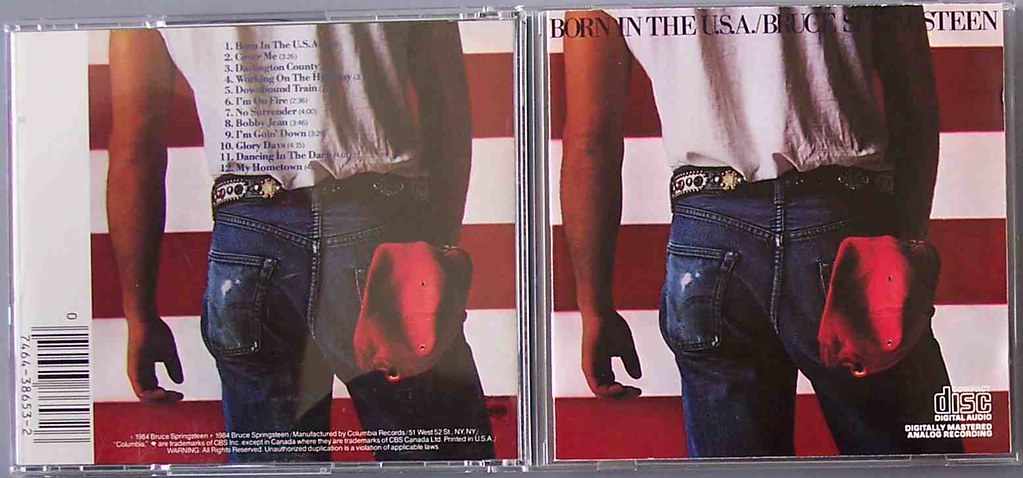
4. **1984–1986: Born in the U.S.A. and Cultural Phenomenon**The release of *Born in the U.S.A.* in 1984 marked a seismic shift in Bruce Springsteen’s career, propelling him to unprecedented global superstardom. The album sold an astonishing 30 million copies worldwide, cementing its place as one of the best-selling albums of all time. This phenomenal success was amplified by the release of seven singles that all reached the top ten, showcasing the album’s broad appeal and commercial potency. The title track itself, “Born in the U.S.A.,” became an anthem, though its meaning was widely misinterpreted.
The song was, in fact, a bitter commentary on the plight of Vietnam veterans, many of whom were Springsteen’s friends, and the systemic mistreatment they faced upon their return. The lyrics in the verses were “entirely unambiguous when listened to,” explicitly detailing these hardships. However, the powerful, anthemic music and the seemingly patriotic title led many, from politicians to the general public, to misinterpret it as a celebration of American exceptionalism, overlooking the nuanced critique embedded within its verses. Despite this widespread misinterpretation, the song made a significant political impact, as Springsteen was seen as advocating for the rights of the common working-class man, a consistent theme in his body of work.
The widespread misinterpretation of “Born in the U.S.A.” as a purely patriotic anthem led to its entanglement with the 1984 presidential campaign, generating considerable public discussion and folklore. Conservative columnist George Will, after attending a Springsteen concert, wrote a column praising Springsteen’s work ethic. Six days later, then-President Ronald Reagan, at a campaign rally in Hammonton, New Jersey, briefly referenced the song, stating, “America’s future rests in a thousand dreams inside your hearts. It rests in the message of hope in the songs of a man so many young Americans admire—New Jersey’s own, Bruce Springsteen.”
Springsteen, however, quickly addressed this appropriation. Two nights later, at a concert in Pittsburgh, he told the crowd, “Well, the president was mentioning my name in his speech the other day and I kind of got to wondering what his favorite album of mine must’ve been, you know? I don’t think it was the *Nebraska* album. I don’t think he’s been listening to this one.” He then launched into “Johnny 99,” a track from *Nebraska* with stark allusions to closing factories and criminals, clearly signaling his intent and distancing himself from the conservative interpretation. This moment underscored Springsteen’s commitment to the working-class narratives central to his art.
Among the seven hit singles from *Born in the U.S.A.*, “Dancing in the Dark” was the biggest, peaking at No. 2 on the Billboard singles chart. Its accompanying video, directed by Brian De Palma, famously featured a young Courteney Cox dancing on stage with Springsteen, a moment that significantly helped launch the actress’s career. Another notable track, “Cover Me,” was initially written by Springsteen for Donna Summer, but his record company successfully persuaded him to retain it for the new album. As a testament to his admiration for Summer’s work, Springsteen penned another song, “Protection,” specifically for her. John Sayles also directed videos for the album, contributing to its pervasive visual presence.
In 1985, Springsteen participated in the recording of the charity single and album “We Are the World,” further cementing his status as a major cultural force. His live cover of the Jimmy Cliff song “Trapped,” featured on that album, received moderate airplay on U.S. Top 40 stations and also reached No. 1 on the Billboard Top Rock Tracks chart, demonstrating his ability to popularize even covers. The *Born in the U.S.A.* period marked the pinnacle of Springsteen’s visibility in popular culture and his broadest audience reach, significantly aided by Arthur Baker’s dance mixes of three of the album’s singles.
The album’s unprecedented success extended globally. Between June 15 and August 10, 1985, all seven of Springsteen’s albums simultaneously appeared on the UK Albums Chart, a historic first for any artist to have their entire back catalogue chart at once. This demonstrated the immense popularity and widespread appeal he commanded during this period. The era culminated near the end of 1986 with the release of *Live/1975–85*, a five-record box set (also available on three cassettes or three CDs). This monumental release became the first box set to debut at No. 1 on the U.S. album charts and remains one of the most commercially successful live albums of all time, ultimately selling 13 million units in the U.S. The 1980s also saw the launch of several Springsteen fanzines, including *Backstreets magazine*, highlighting the depth of his fan engagement.
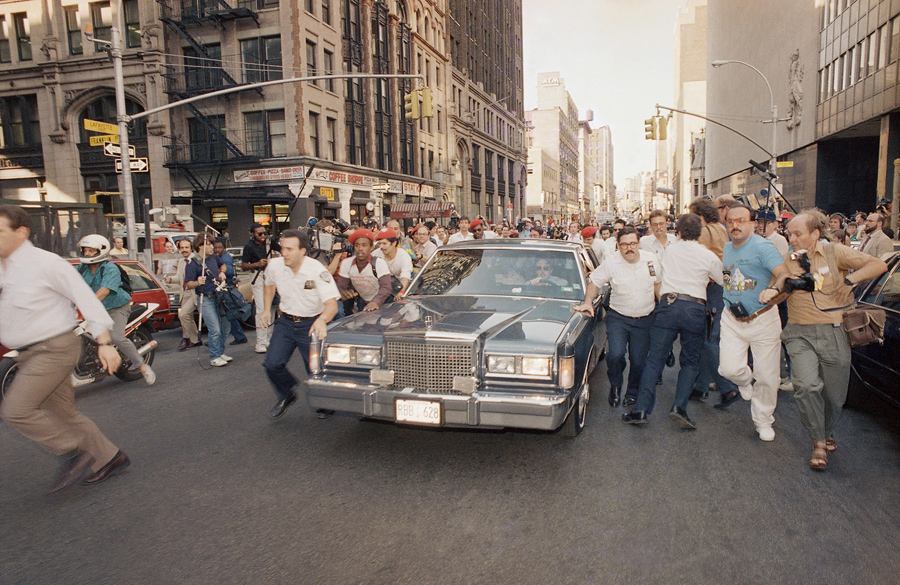
5. **1987–1991: Tunnel of Love and Growing Activism**Following the massive, anthemic success of *Born in the U.S.A.*, Bruce Springsteen released *Tunnel of Love* in October 1987. This album presented a stark contrast, showcasing a much more sedate and contemplative side of his artistry. It was a mature reflection on the multifaceted nature of love – found, lost, and squandered – with the full sound of the E Street Band included only selectively. While it did not match the astronomical sales figures of its predecessor, *Tunnel of Love* was nonetheless a commercial success, reaching No. 1 on the Billboard 200, indicating his sustained ability to connect with a broad audience.
The album’s reflective tone and deeply personal lyrics provided a window into Springsteen’s evolving perspective, moving away from the broader social narratives of *Born in the U.S.A.* towards a more intimate examination of relationships and personal introspection. This shift demonstrated his artistic courage and willingness to explore different emotional landscapes, even after achieving immense mainstream success with a different style. The selective use of the E Street Band’s full power allowed for a more nuanced and intricate sonic palette, fitting the album’s introspective themes.
Beyond his musical output, this period also saw Springsteen deepen his involvement in social and political activism. On July 19, 1988, he performed a monumental concert in East Germany that attracted an astounding 300,000 spectators. Journalist Erik Kirschbaum, in his 2013 book *Rocking the Wall. Bruce Springsteen: The Berlin Concert That Changed the World*, called it “the most important rock concert ever, anywhere.” The concert was initially conceived by the Socialist Unity Party’s youth wing as an attempt to pacify the youth of East Germany, who were increasingly yearning for greater freedom and exposure to Western popular music.
However, Kirschbaum’s analysis posits that the concert’s overwhelming success inadvertently fueled opposition to the East German regime, playing a significant, albeit indirect, role in catalyzing the events that led to the fall of the Berlin Wall the following year. This event showcased the immense cultural and political power of Springsteen’s music and persona, transcending mere entertainment to become a symbol of aspiration and change for a population under restrictive rule.
Later in 1988, Springsteen further demonstrated his commitment to global human rights by headlining the worldwide Human Rights Now! tour for Amnesty International. This tour saw him lend his considerable platform to advocating for human rights causes on an international scale, aligning his personal values with his professional endeavors. However, this period of activism and personal reflection also brought significant changes to his musical ensemble. In October 1989, Springsteen made the difficult decision to dissolve the E Street Band, signaling a temporary pause in one of rock’s most iconic partnerships and foreshadowing a new chapter in his musical exploration.” , “_words_section1”: “1948
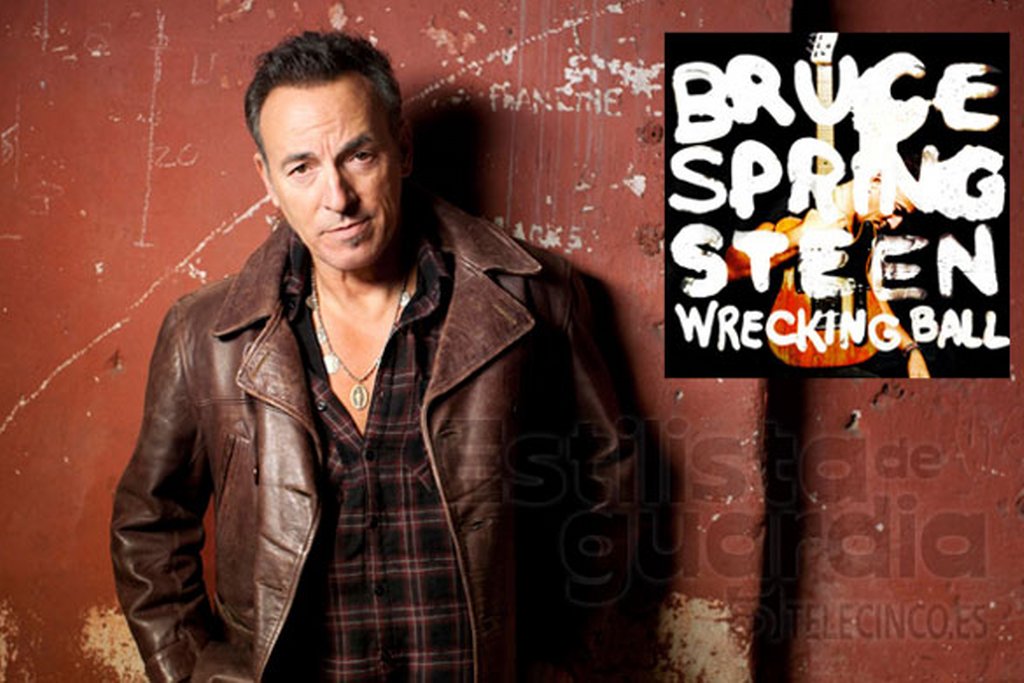
6. **1992–1998: Independent Ventures and Critical Acclaim**Following the E Street Band’s temporary dissolution in 1989, Bruce Springsteen embarked on a new artistic phase. In 1992, he released *Human Touch* and *Lucky Town* simultaneously, working with session musicians after relocating to Los Angeles. This shift, perceived by some as “going Hollywood,” and an electric performance on MTV Unplugged, received mixed reception and generated fan dissatisfaction, highlighting his solo transition’s challenges.
A significant critical achievement arrived in 1994 when Springsteen won an Academy Award for “Streets of Philadelphia,” his poignant song for the film *Philadelphia*. The music video uniquely showcased his actual vocal performance, recorded with a hidden microphone over a prerecorded instrumental track. This prestigious award underscored his continued songwriting prowess outside his traditional rock framework.
In 1995, the E Street Band briefly reunited to record new songs for his first *Greatest Hits* album, a session chronicled in the documentary *Blood Brothers*, followed by a single show at Tramps in New York City. Subsequently, Springsteen released his second folk album, *The Ghost of Tom Joad*, inspired by Steinbeck and *Journey to Nowhere*. While less celebrated than *Nebraska* due to its minimal melody and political themes, it was praised for giving a voice to marginalized communities.
The album was supported by a lengthy, worldwide solo acoustic tour, featuring drastically reinterpreted older songs. This period concluded with Springsteen’s return to New Jersey and the 1998 release of *Tracks*, a four-disc box set of outtakes. Reflecting on this era, Springsteen candidly described the 1990s as a musically “lost period” for him, acknowledging, “I didn’t do a lot of work. Some people would say I didn’t do my best work.”
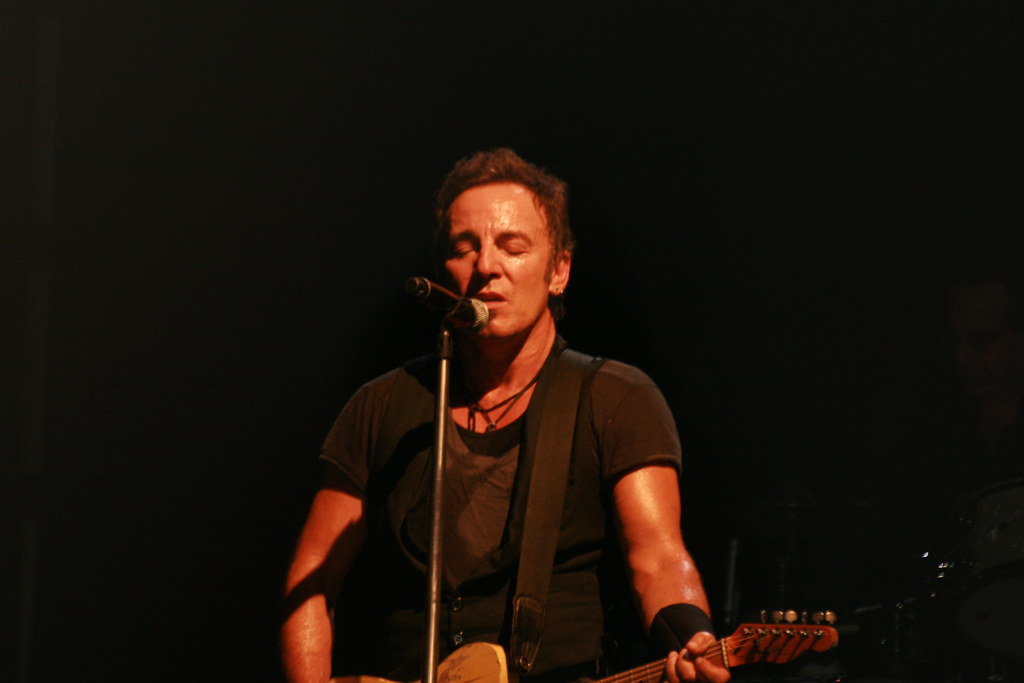
7. **1999–2007: The E Street Band’s Resurgence and Post-9/11 Works**The new millennium invigorated Bruce Springsteen’s career, highlighted by his 1999 Rock and Roll Hall of Fame induction and, more crucially, the highly anticipated E Street Band reunion. This led to an extensive and popular Reunion Tour with monumental sold-out engagements, powerfully reaffirming the band’s collective dynamic and enduring appeal.
During this period, Springsteen introduced “American Skin (41 Shots),” a controversial song addressing the police shooting of Amadou Diallo, underscoring his consistent engagement with social issues. This revitalized creative energy culminated in 2002 with *The Rising*, his first studio album with the full band in 18 years. Largely a profound reflection on the September 11 attacks, the album became a critical and popular success, with its title track gaining extensive airplay and the record becoming his best-selling new material in 15 years.
*The Rising* garnered significant industry recognition, earning multiple Grammys in 2003, including Best Rock Album and Best Rock Song. The album’s success fueled *The Rising Tour*, including an unprecedented ten-night stand at Giants Stadium, and saw Springsteen participate in the 2004 Vote for Change tour. Subsequently, he released *Devils & Dust* in 2005, a low-key acoustic album that explored a soldier’s feelings during the Iraq War, topping charts in ten countries despite mixed tour attendance.
In 2006, *We Shall Overcome: The Seeger Sessions* emerged as an American roots music project, celebrating songs popularized by Pete Seeger. His next E Street Band album, *Magic*, arrived in October 2007, featuring new songs and “Terry’s Song,” a tribute to his late assistant Terry Magovern. It debuted at No. 1 in the U.S., Ireland, and the UK, but the ensuing *Magic Tour* was tragically the final one for long-time E Street member Danny Federici, who passed away in 2008.
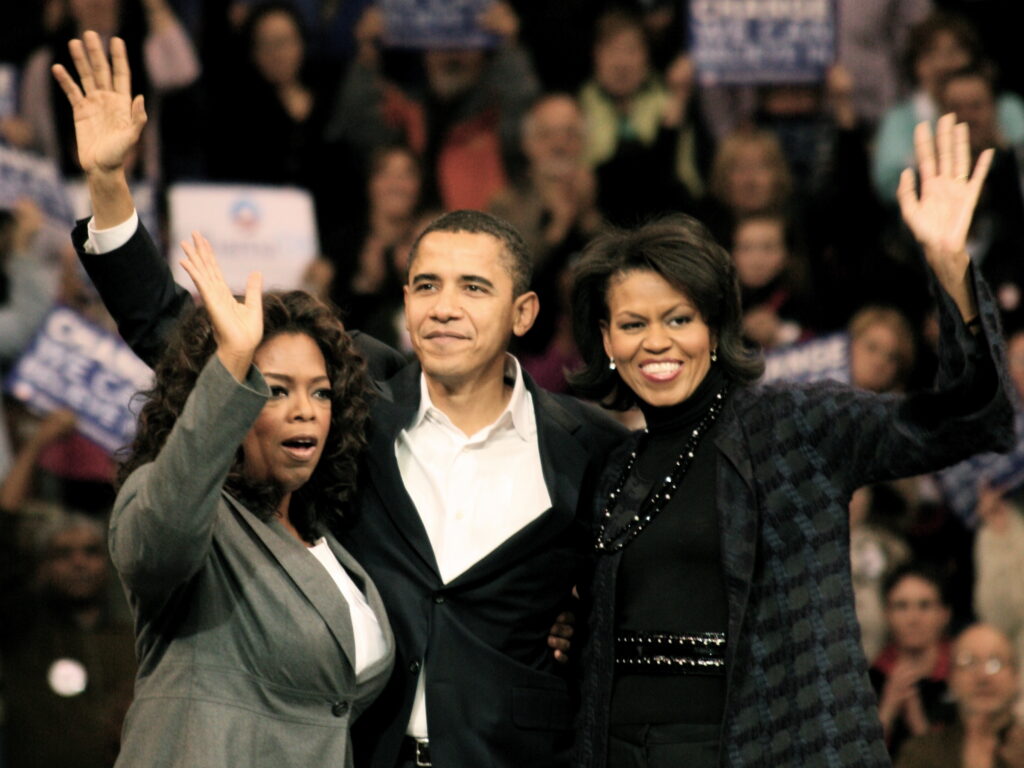
8. **2008–2011: Political Advocacy and National Recognition**The late 2000s saw Bruce Springsteen deepen his political involvement, actively supporting Barack Obama’s 2008 presidential campaign through solo acoustic performances at rallies, where he debuted “Working on a Dream” with Patti Scialfa. Following Obama’s victory, “The Rising” was the first song played at the Chicago celebration. He further participated in the 2009 Obama Inaugural Celebration, performing “The Rising” and joining Pete Seeger for “This Land Is Your Land.” Earlier, he earned a Golden Globe for Best Song for “The Wrestler,” a poignant track for the film.
A global audience tuned in on February 1, 2009, as Springsteen performed the Super Bowl XLIII halftime show, an engagement he accepted after previous declines. In his first press conference in over 25 years, he promised a “twelve-minute party.” His high-energy, 12-minute and 45-second set included abbreviated versions of “Tenth Avenue Freeze-Out,” “Born to Run,” “Working on a Dream,” and a football-themed “Glory Days,” prompting him to declare this “the busiest month of my life.”
His album *Working on a Dream*, dedicated to Danny Federici, was released in late January 2009, followed by a supporting tour until November. The tour concluded with five final shows at Giants Stadium, where he debuted “Wrecking Ball.” In December 2009, Springsteen received the esteemed Kennedy Center Honors. President Obama praised his ability to incorporate ordinary Americans into his songs, calling his concerts “communions,” with musical tributes from diverse artists.
As the 2000s closed, Springsteen was recognized as one of *Rolling Stone*’s eight Artists of the Decade and ranked fourth in total concert grosses. This era, however, concluded with profound loss; Clarence Clemons, the E Street Band’s iconic saxophonist and a founding member, passed away on June 18, 2011, due to complications from a stroke, leaving an indelible void in the band’s lineup and live performances.
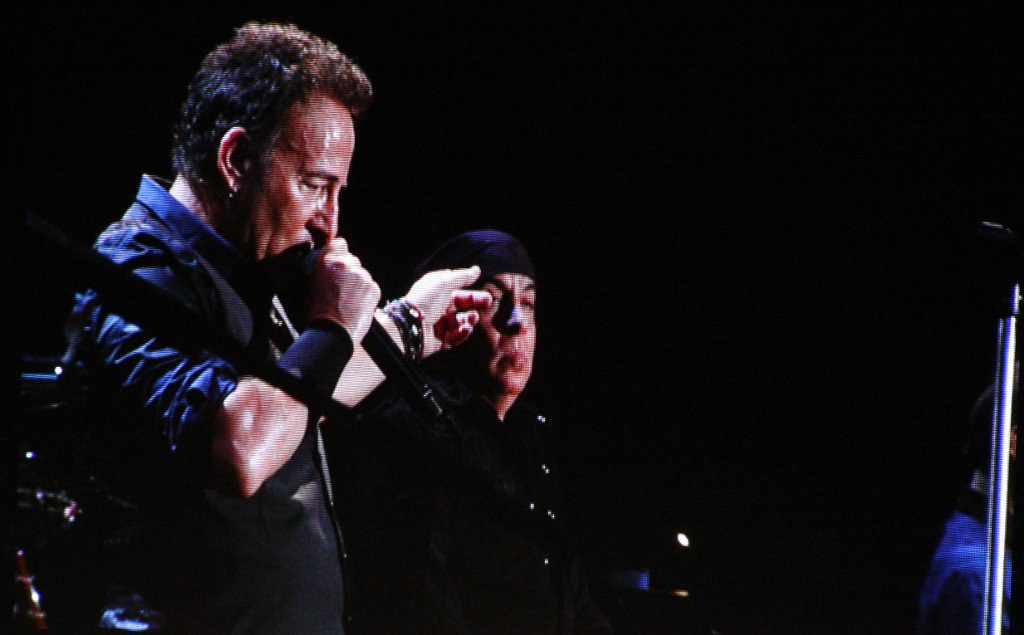
9. **2012–2018: Autobiography, Broadway, and Enduring Influence**The year 2012 marked the release of Bruce Springsteen’s 17th studio album, *Wrecking Ball*, which included previously live-only versions of its title track, “Land of Hope and Dreams,” and “American Land.” This album became his tenth No. 1 in the U.S., tying him with Elvis Presley. The subsequent *Wrecking Ball Tour* set a new record for his longest concert in Helsinki, spanning over four hours. Springsteen actively campaigned for President Barack Obama’s re-election in 2012, performing acoustic sets at rallies and debuting “Forward.”
The *Wrecking Ball Tour* was named the Top Draw by the Billboard Touring Awards for highest attendance, and financially, it grossed second only to Roger Waters’ tour. Springsteen was the second highest money-maker of 2012, behind Madonna, with $33.44 million, while the album and its single “We Take Care of Our Own” received three Grammy nominations. *Rolling Stone* also lauded *Wrecking Ball* as the number one album of 2012. In July 2013, the documentary *Springsteen & I*, co-produced by Ridley Scott, offered a unique worldwide cinematic glimpse into his career.
In January 2014, Springsteen released *High Hopes*, his eighteenth studio album, featuring covers, re-recorded outtakes, and new versions of previously released songs, notably including material recorded with the late Clarence Clemons and Danny Federici. *High Hopes* became his eleventh No. 1 album in the U.S. and his tenth in the UK. *Rolling Stone* recognized it as the second-best album of 2014, and this period also saw his acting debut in Steven Van Zandt’s show *Lilyhammer* and memorable performances on the final episode of *The Daily Show*.
This era culminated in profound national recognition and a groundbreaking artistic venture. Springsteen supported Hillary Clinton’s 2016 presidential campaign and was awarded the Presidential Medal of Freedom by Barack Obama. From October 2017 to December 2018, Springsteen captivated audiences with *Springsteen on Broadway*, an acclaimed residency where he interwove excerpts from his autobiography with spoken reminiscences, earning him a Special Tony Award in 2018 and yielding a successful live album, solidifying his status as a multifaceted artist.

10. **2019–2021: Reflective Works and Adapting to New Eras**Entering a new decade, Bruce Springsteen continued his prolific output with his nineteenth studio album, *Western Stars*, released in June 2019. This album explored orchestral pop influenced by 1960s and 1970s Southern California sounds. Its cinematic themes were further enhanced by a companion film, *Western Stars*, which premiered at the Toronto Film Festival in September 2019. Springsteen co-directed the film with Thom Zimny, presenting himself and his backing band performing the album’s music live. Both the film and its soundtrack were released in October 2019, showcasing a cohesive artistic vision.
The COVID-19 pandemic in 2020 prompted Springsteen to adapt to new performance formats, demonstrating his enduring commitment. In May 2020, he made a remote appearance during a livestream concert by the Dropkick Murphys at Fenway Park in Boston, joining them on co-vocals for “Rose Tattoo” and “American Land.” This event, the first no-audience music performance in a major U.S. arena during the pandemic, attracted over nine million viewers and raised more than $700,000 for charitable donations.
October 2020 saw the release of Springsteen’s twentieth studio album, *Letter to You*, marking a highly anticipated return to his rock roots with the E Street Band. An accompanying black-and-white documentary of the same name, directed by Thom Zimny, was released concurrently, providing a candid look into the album’s creation. Supported by singles like the title track “Letter to You” and “Ghosts,” the album quickly made a significant cultural impact. In November, Springsteen further diversified his collaborations, featuring as a guest singer on Bleachers’ single, “Chinatown.”
*Letter to You* achieved considerable commercial success, reaching No. 2 in the U.S. and notably making Springsteen the first artist to release a top-five album in six consecutive decades, a testament to his unparalleled longevity. The E Street Band, with Springsteen, appeared as musical guests on *Saturday Night Live* in December 2020, performing “Ghosts” and “I’ll See You in My Dreams.” This marked the band’s first performance since 2017 to promote *Letter to You*, with Garry Tallent and Soozie Tyrell opting to stay home due to COVID-19 concerns.
From the gritty clubs of the Jersey Shore to global stadium stages and even the hallowed halls of Broadway, Bruce Springsteen’s journey is far more than a chronicle of musical success; it is a deeply woven tapestry of American experience. His voice, whether roaring with the E Street Band or intimately confessing truths on an acoustic guitar, has consistently championed the working class, wrestled with national identity, and explored the intricate landscapes of love and loss. More than an artist, he has become a cultural touchstone, an unwavering symbol of hope and resilience, whose powerful narrative continues to resonate, reminding us that the spirit of rock and roll, and indeed the American dream, is ever evolving, forever “Born to Run.”

